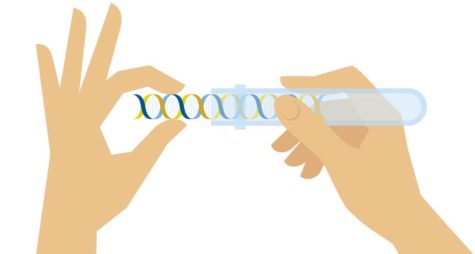Genes and the Severity of COVID
The effect of COVID-19 is seen throughout all ages and races of people and in some countries, socioeconomic status plays a large role in the severity of the disease. Minority groups have seen the largest impact as poor healthcare in many areas of the world offered to minorities decreases their ability to fight infectious diseases. In the UK, the effect on minorities is seen in the first and second waves, as it was generally more minority groups that were affected both times. It raises questions as to why these different groups suffer a different severity of COVID, although living in the same country. One possible reason is the socioeconomic side of it. In the UK, ethnic people tend to live in crowded areas compared to the general population and are more likely to live in a multigenerational household where the risk of transmission is higher. In a study published by The Lancet, however, results showed that compared to the first wave, south Asians had a higher risk of ending up in the hospital or dying of COVID, compared to other minority ethnic groups and white people. Surprisingly, this is because of a high-risk variant gene that is found in almost 60% of all South Asian people.
Researchers at the University of Oxford found this gene which is called LZTFL1, and it is involved in higher severity diseases. It is active in a layer of cells called the respiratory epithelium which lines the airways and lungs. These cells are essential for property breaking as they act as a barrier and filter between the air coming into the respiratory story and the inner tissues of the body. The gene reduced the ability of these cells on the respiratory epithelium, therefore reading the ability of the cells to repair damaged tissue and replace lost cells that are essential when overcome with a disease. It helps make more copies of the proteins, ACE2 and TMPRSS2, which allows COVID to more easily enter the cells and infect them. With this, people who carry this gene variant would have more cells infected, and therefore a more severe infection. However, those who have the gene, researchers say, should still respond to vaccines normally because the gene only impacts the response system of the lungs and not the immune system of the human body.
As mentioned previously, socioeconomic factors play a role in the severity of COVID among South Asians, but insufficient data has made this conclusion only partly accurate. In the study, although ethnic differences in infection risk were not fully accounted for in the differences found in the data. This can possibly be because of insufficient testing in these minority groups as people who were less affected might have been more inclined to participate in the study compared to the ethnic group. That being said however, socio economic problems still do have an effect on the severity and it is not all because of the poor pre-existing health conditions. Possible solutions can include an immediate policy response to make sure that the health system is inclusive of all ethnic minority groups and that language is not a barrier while commuting. Additionally, other solutions can be to ensure that minorities have access to proper PPE and are able to work safely. COVID definitely has the potential to worsen socioeconomic inequalities in health which is why taking preventative measures can avert some of the problem.
While South Asians are predisposed to a weak COVID response, there are still other factors that play into the severity of COVID amount minority populations. While there isn’t much to be done about the biology of a whole race, we are able to avert some of the issue by focusing on socio economic problems that specific areas may have.
Written By: Asritha Tunuguntla








